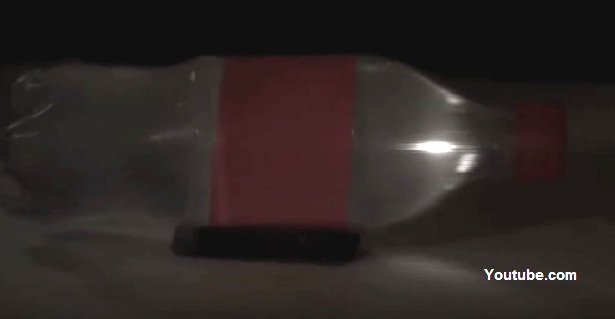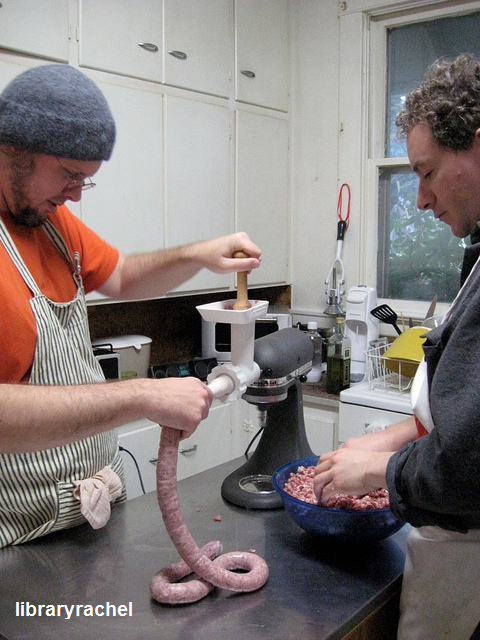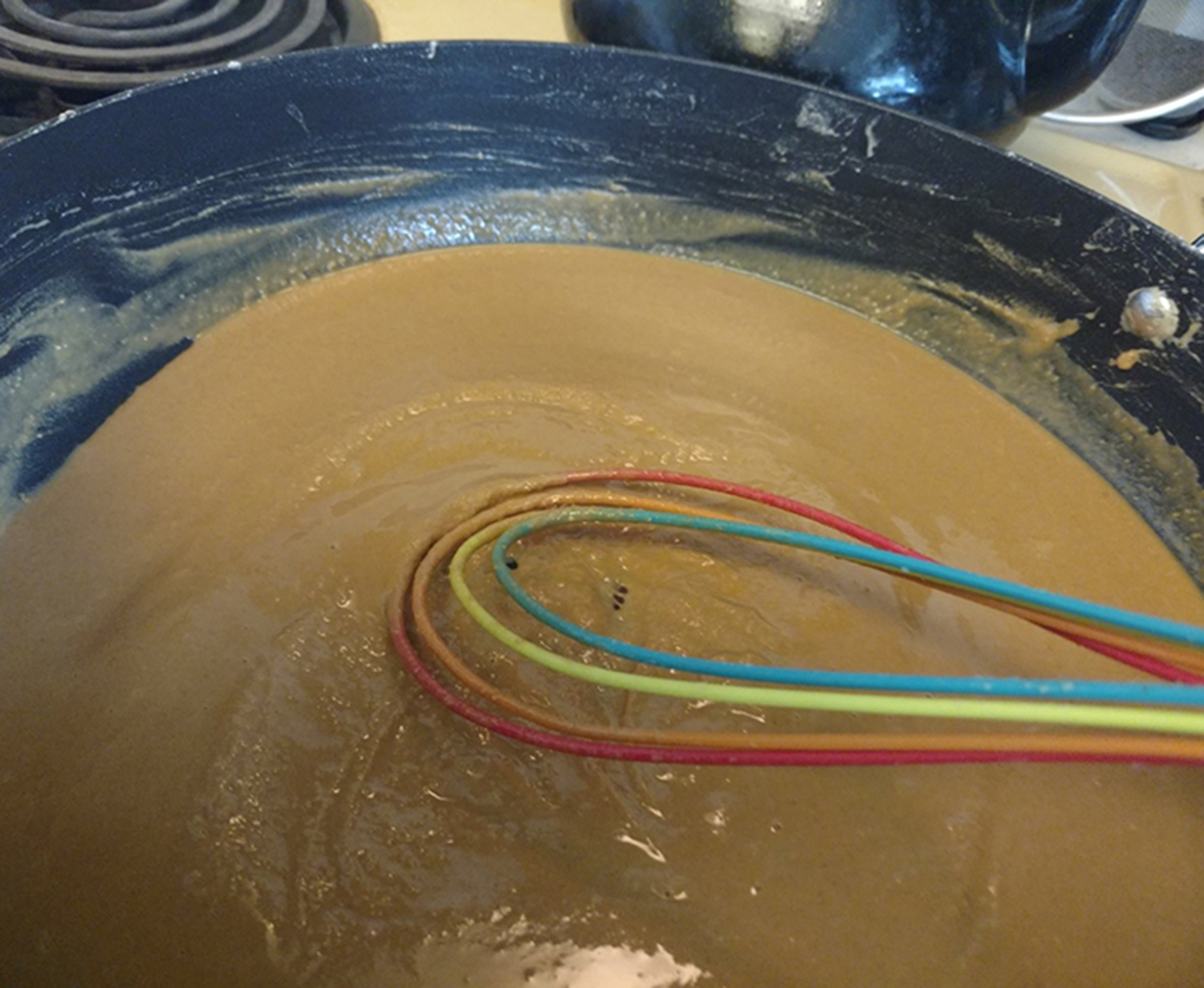QUICK TIP 68 – MICRO(wave)-MACHINES

Why Hello There, and welcome back to Kitchen Catastrophes Quick Tips, where we analyze and satirize some facet of food culture, production, and history. Today’s topic is a technical turn for the piece, as we’re going to discuss Microwaves. How they work, what they do, and how to use them. And if you’re saying to yourself “that doesn’t sound very much like Christmas to me”, then I will remind you that baking cookies, roasting geese, and all the assorted errands of the holidays can really do a number on people, who might end up relying on some quick cooking to sustain themselves this season. Also, it’s the simplest way to re-heat left-overs. So let’s dive on in!
Magnetic Marvel Makes Meals Magical
Alright, this first section isn’t going to really be about food in any appreciable way, so if you want to skip a science lesson, I’d jump to the next title. If you’re wondering why there’s science lesson in this at all, welcome to the site, I’m Jon O’Guin, the fat man’s Alton Brown, and if a man can’t be Bill Nye for a day on his own blog, then what is America even FOR?
Old people singing patriotic songs before doing stupid things?
So, microwaves, how do they work? Well, first off, we need to clarify some terminology. The machine that sits on your counter top is not, technically, a microwave, but a microwave OVEN, because it uses microwaves to cook food. IN fact, from this point on in today’s post, whenever I mean the machine, I’ll call it a “microwave oven”, to avoid confusion with actual microwaves. Sure, it’ll make me sound like a 60’s salesman, but that’s the price one pays for precision. What are ACTUAL microwaves? Ooh boy, that’s a conversation.
For the record, I am not, legally, a scientist or a scientific expert. I took AP chemistry in high school, and don’t recall ever taking a formal physics class. However, I am a huge fucking nerd, and the internet exists, so I have some idea of what’s going on. Think of me as a nerd-adapter: I may not be perfectly conveying the nuances of these topics, but I’m rendering them into a simpler form that’s easier to digest.
A Hot Dog Vendor of facts, if you will.
ith that in mind: Microwaves are a type of electromagnetic radiation: vibrating wavelengths of energy traveling through space. Just like Gamma Rays, X-Rays, Radio waves, and Light. Yes, all light is a form of radiation and is a wave (sometimes). If all of this sounds a little confusing, or you need a brush up on how it works, I find it’s easier if I picture it as the world being underwater: in water, we understand that there are things floating around in the water, and there are things that move through the water, almost invisibly. Heat, for one. If you (or a child near you, for blame’s sake) pees in a pool, the heat spreads outward, technically a little ways FARTHER than the pee does. Currents, for another. Things move the water itself, creating pressure and motion. This is also true about light. And ALL of it is also true of air, it just FEELS different.
And these forms of radiation act in specific ways. X-Rays, we discovered, can go through a lot of materials, letting us use them to take pictures of things inside other things. Radio waves have a wide range of vibrations, so we can get them to carry sound for us. These waves, like sound waves, hit things that don’t absorb them and bounce off. You can even see it happen with light using super-slo-motion cameras.
That’s not a glint in that picture. It’s a tiny little ‘clip’ of light flying through the bottle.
The point is that microwaves aren’t very different from the other types of waves. They have a wavelength, a frequency, they bounce off of stuff, it’s a consistent system. And microwaves can be generated by machines called “magnetrons”, named, like a lot of things, after ‘electrons’. Once we came up with that one, we just kind of stuck with “-tron” as meaning “SCIENCEY THING”.
Magnetrons are… look, this is where the whole “I’m not an expert” thing really kicks in. I actually thought magnetrons worked by spinning magnets (because most other –tron words I know involved rotation/oscilliation) making them the electromagnetic version of a desk fan. Looking into it, that’s wrong, and I just straight up don’t GET how they work. I THINK I have some idea, but it’s not something I can condense into an analogy or metaphor to explain.
To (foolishly) continue my (bad) hot dog metaphor, I’m only just getting the meat in the casing.
So that’s the basic science of microwaves and magnetrons. What makes them interesting and useful in cooking is that they can heat things up. How did we figure this out, how do we use it? Good question, let’s talk about the ovens themselves.
Micro Melting Machines = Major Magnet Muncher
Is this what we’re in for today, Title Jon? Endless Alliteration? Fine.
The story goes that a scientist discovered microwaves’ ability to cook food while working with a magnetron after World War 2. See, magnetrons were used in World War 2 to blast microwaves out into the air, because that’s how radar worked. Yes, the same tech that now thaws college freshmen’s burritos was once used to track Luftwaffe planes.
This is about the level of human misery and destruction I thought would birth The Hot Pocket.
The scientist stepped in front of the magnetron with a chocolate bar in his pants pocket, and the bar melted. A bit of experimentation later, and he discovered that microwaves could cook food seemingly without heat. And if you jumped down here to AVOID the science, you’re probably feeling a little ripped off, but I swear, this bit you need to understand. See, understanding HOW a microwave oven works helps you understand what it can do, and what to avoid when using it.
On Monday, I compared the way microwave ovens work to the atoms Tokyo-drifting through food. And that’s a okay analogy, but I thought of a better one today: Microwaves work like music at a mosh pit.
Don’t punch me in the nose for joy just yet.
So, food , like all matter, is an assortment of atoms clumped together. And heat is the vibration of those atoms. So imagine a crowd of people just standing around as the cold food you put in the microwave oven. When the microwave starts pumping out the bass, the real metalheads in the crowd are going to get hyped up first. They’ll start jumping, head-banging, throwing elbows, etc. And as they do that, they’re going to hype up the people around them, until EVERYONE is thrashing and having a good time.
Those ‘real metalheads’ in the mosh example are polar molecules, which are particularly susceptible to microwave agitation. And a very common, very IMPORTANT polar molecule for our discussion is dihydrogen monoxide.
dun dun DUN
Water, as a necessary component for most organic life and therefore most food products, is very commonly found in food, and it’s the starting point for microwave heating. This is partly why most microwavable foods are either frozen or straight-up liquid: the more water involved, the more of the food it can affect. (Effect? Affect.) Microwaves just straight up work better the more liquid is involved. And I actually have a fun sign/craft/whatever for this, straight from my family’s self-care regimen.
It says something about me that using the phrase “self-care” grates on my spirit more than making jokes about the London Blitz.
That Technicolor pillow for hippie dogs is what my family calls ‘a rice bag’. We call it that, because that’s what it is: a cloth bag containing dried rice. And it’s something most of my family will turn to after a long day. You toss the bag into a microwave oven for 1-2 minutes, and the rice will heat up to a point that it can be used as a heat pad, but it’s not so hot it burns you. And the REASON it doesn’t get too hot is because there’s very little water in it.
And that little tip brings me to the final portion of our post: the PRACTICAL USE SECTION.
Making More Use from your Microwave
Since we’ve rambled on about science for about 1,000 words, it’s time for all that info to pay off, by giving us insights, tips and suggestions about we can better use our microwave ovens in our day-to-day lives.
1. Static Shock
If you skipped the science section: microwaves are made by magnets messing with electromagnetic radiation. And THAT’S why you don’t put metal in a microwave oven: metal’s conductive properties absorb the electromagnetism and convert it into straight-up electricity, and if too hot, plasma. Putting metal in the microwave oven is like stabbing silverware into a socket.
2. Hot Spot
Since microwaves are, well, WAVES, that means they have predictable patterns, and will hit the walls of your microwave oven in a set way. This means that there will always be “hot” and “cold” spots in the microwave oven: Places where more or less electromagnetic activity takes place. THIS is why most home microwaves have the little rotating turn-table: by moving the food, they avoid specific cold spots. This also explains why if you overload the turntable, your food doesn’t cook as well: part of it got stuck in a cold spot. If you want to get weirdly thorough on figuring this out, you can get a paper towel and cover it in mini-marshmallows, then microwave it for 30 seconds or so. Where the marshmallows puff up and melt, that’s a hot spot. Where they don’t do anything? That’s cold. (Note: high end commercial microwave ovens actually place a piece of machinery at the magnetron to randomize microwave distribution, so you might see big fancy microwaves ovens without turntables.)
3. Penetration.
Always use protection if you’re- wait, wrong post. Sorry. Since microwaves have to penetrate food to effect change, when cooking or reheating food, it helps to spread it out relatively thinly. The more surface area you can create versus volume, the better. So don’t make a big pile in the middle of the plate. In fact, if possible, laying your food in a ring around the plate, with a gap in the middle, is shown to increase even cooking.
4. The Revita-Ray.
Microwaves directly mess with polar molecules, as I said before. And two BIG polar molecules in food are the aforementioned water, and also sugar. And this is where this tip comes in handy: a lot of what we think of as foods ‘going bad’, such as stale bread, limp potato chips, dull spices, etc, comes from the sugars, waters, or oils in the foods changing over time. A quick blast of microwaves can actually sort out a lot of these issues: you can declump hardened sugar (or crystallized honey), revitalize stale bread, expunge water from your chips (you’ll need a paper towel for best results), and bring some pep back to your cayenne pepper.
5. Manipulating molecular menaces
You can use microwaves to make certain distasteful kitchen tasks a little simpler. For instance, microwaves can kill the tear-producing enzymes in onions if you need to chop them. A bit of microwaving also makes it easier to skin and peel foods like garlic, tomatoes, peaches, etc.
6. The Wrap-Up Acid Steamer
Lastly, over time, microwave ovens get messy. Foods pop and sputter, greases vaporize and stick to the walls. Eventually it’s time to clean. And you can make your life easier by prepping your microwave oven with this specific trick: the Acid Steam. Despite sounding like a Batman villain weapon, the idea is really quite simple: before cleaning your microwave oven, take a bowl and fill it mostly with water. Add some form of simple kitchen acid: white vinegar or lemon juice would both work. Microwave it for 2-3 minutes, to boil the acidulated water. The hot, slightly acidic steam will make the various gunks and globs easier to wipe off cleanly. Boom.
And that’s our discussion on Microwaves and Microwave Ovens. I hope it was enlightening to you, and you got at least something that can help you. Now, if you don’t mind, I have breakfast to get to.
Did I buy these solely so I’d have a microwaved breakfast?
No, the store was out of the protein bars I usually eat.
As ever, supporting the site via Patreon brings us ever closer to our goals of actually, you know, NOT losing money bringing you such…insights as “microwaves are music in mosh pits”. We’re getting very close to being able to start upgrading equipment to bring you even BETTER posts and perks. Of course, at this time of year, it’s often simply the kind thoughts and well-wishes that lift spirits, so don’t be afraid or ashamed of simply supporting us via social media! Shares, comments, re-tweets and likes all help us reach out to more and more people.
MONDAY: JON BRINGS AFRICA BACK TO WASHINGTON, AS HE MAKES MAAFE AT HOME.
THURSDAY: MOVED BY HIS AFRICAN MEAL, JON TALKS CHRISTMAS CULINARY TRADITIONS AROUND THE WORLD!














